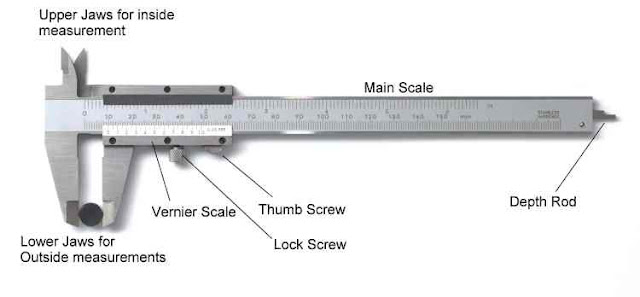Types of Bolts
Types of Bolts:
There are various types of
Bolts Explained below:
1. Hexagonal-headed bolt
2. Square-headed bolt
3. Cylindrical or
cheese-headed bolt
4. Cup-headed or
round-headed bolt
5. T-headed bolt
6. Countersunk-headed bolt
7. Stove bolt
8. Carriage bolt
9. Hook Bolt
10. Expansion bolt
11. Foundation or rag bolt
12. Eye-bolt
13. Stud Bolt
1.
Hexagonal-headed bolt:

Hexagonal-Headed Bolt

Hexagonal-Headed Bolt
This is the most common
form of a bolt and is used for general fasting purposes. The hexagonal head is
chamfered at its upper end. To prevent rotation of the bolt while screwing the
nut on or off, the bolt-head is held by another spanner.
2.
Square-Headed Bolt:

Square-Headed Bolt

Square-Headed Bolt
This bolt is commonly used
when the head is to be accommodated in a recess. This recess is made of square
shape so that the bolt is prevented from turning when the nut is screwed on or
off. When a square-headed bolt is to be used with its head projection outside,
it is provided with a neck of square cross-section. This prevents rotation of
the bolt. This bolt is commonly used in bearings for the shaft.
3.
Cylindrical or
Cheese-Headed Bolt:

Cylindrical or Cheese-Headed Bolt

Cylindrical or Cheese-Headed Bolt
This type of bolt is used
where projecting corners are unacceptable, and where the space for arranging
the bolt-head is relatively limited. The rotation of the bolt is prevented by
means of a pin inserted into the shank just below the head. The projecting part
of this pin fits into a corresponding groove in the adjacent piece. This bolt
is commonly used in big ends of connectors, eccentrics, etc.
4.
Cup-Headed or round-headed
bolt:

Cup or Round-Headed Bolt

Cup or Round-Headed Bolt
This bolt is used when
projecting are undesirable and where better appearance is required. It is usually
provided with a sung forged on the shank just below the head to prevent
rotation of the bolt. This bolt is used in the construction of tanks and
certain parts of locomotives.
5.
T-Headed Bolt:

T-Headed Bolt

T-Headed Bolt
This type of bolt is used
for securing clamps, vices, and other accessories to the tables of machine
tools. The tables are provided with T-slots to accommodate the T-heads. The
neck of this bolt is usually square in section to prevent rotation of the bolt.
6.
Countersunk-Headed Bolt:

Countersunk-Headed Bolt

Countersunk-Headed Bolt
This form bolt is used
where the head of the bolt must not project above the surface of the connection
piece. It may be provided with a snack or a neck to prevent rotation of the
bolt.
7.
Stove Bolt:

Stove Bolt

Stove Bolt
A stove bolt has a round
flat head which is bevelled on the underside to fit a countersunk hole, it is
provided with a slot on the head. For screwing the bolt into a nut by means of
a screwdriver. This is used for assemblies where precision is of no great
importance, and it is desirable to have the head of the bolt flush with the
surface of the work.
8.
Carriage Bolt:

Carriage Bolt

Carriage Bolt
This is used for fastening
wooden parts together or for fastening metal parts to wood. It has squared
portion directly under the head to prevent rotating when the nut is tightened
or slackened.
9.
Hook Bolt:

Hook Bolt

Hook Bolt
The hook bolt is used in
semi-permanent fastening in concrete. This is also used in cases where there is
no room for a bolt hole through one of the pieces to be connected, or in cases
where a bolt hole would seriously weaken a piece. So the hook bolt is used for
attaching shaft hangers to the flanges of joists and girders.
10. Expansion Bolt:

Expansion Bolt

Expansion Bolt
This type of bolt is used
in attaching parts to brick, stone or concrete walls and floors. The bolt has
an internally threaded split sleeve which is slipped into a hole made in the wall
and then expanded by running in the screw.
11. Foundation or Rag Bolt:

Foundation Or Rag Bolt

Foundation Or Rag Bolt
The foundation bolt is
used for fixing into the stone concrete foundation, the head is wider at the
bottom than at the top, and is led into a tapered hole. The tapered head is cut
in an uneven manner (jagged) and molted lead or sulfur is poured into the taper
hole to fill the space between the lead and the stone or the concrete as the
case may be. Where great strength is required, four parallel bars or keys are
used in addition.
12. Eye-Bolt:

Eye-Bolt

Eye-Bolt
The eye-bolt is very
commonly used for lifting purpose. It is screwed or turned inside a threaded
hole on the top of the machine. Electric motors and medium and lightweight
machinery are equipped with one or more eye-bolt so that they may be readily
lifted and moved by an overhead crane.
13. Stud Bolt:

Stud Bolt

Stud Bolt
A stud bolt is consist of
a plain piece of cylindrical steel which is screwed at both ends. It has no
head like a bolt. The nut-end is threaded for a length slightly more than the
thickness of a nut or nuts to be used. The other end called the metal end. It
is threaded for a length at least equal to the diameter of the stud. Stud is commonly used to cylinder covers
engine cylinders.



Comments
Post a Comment